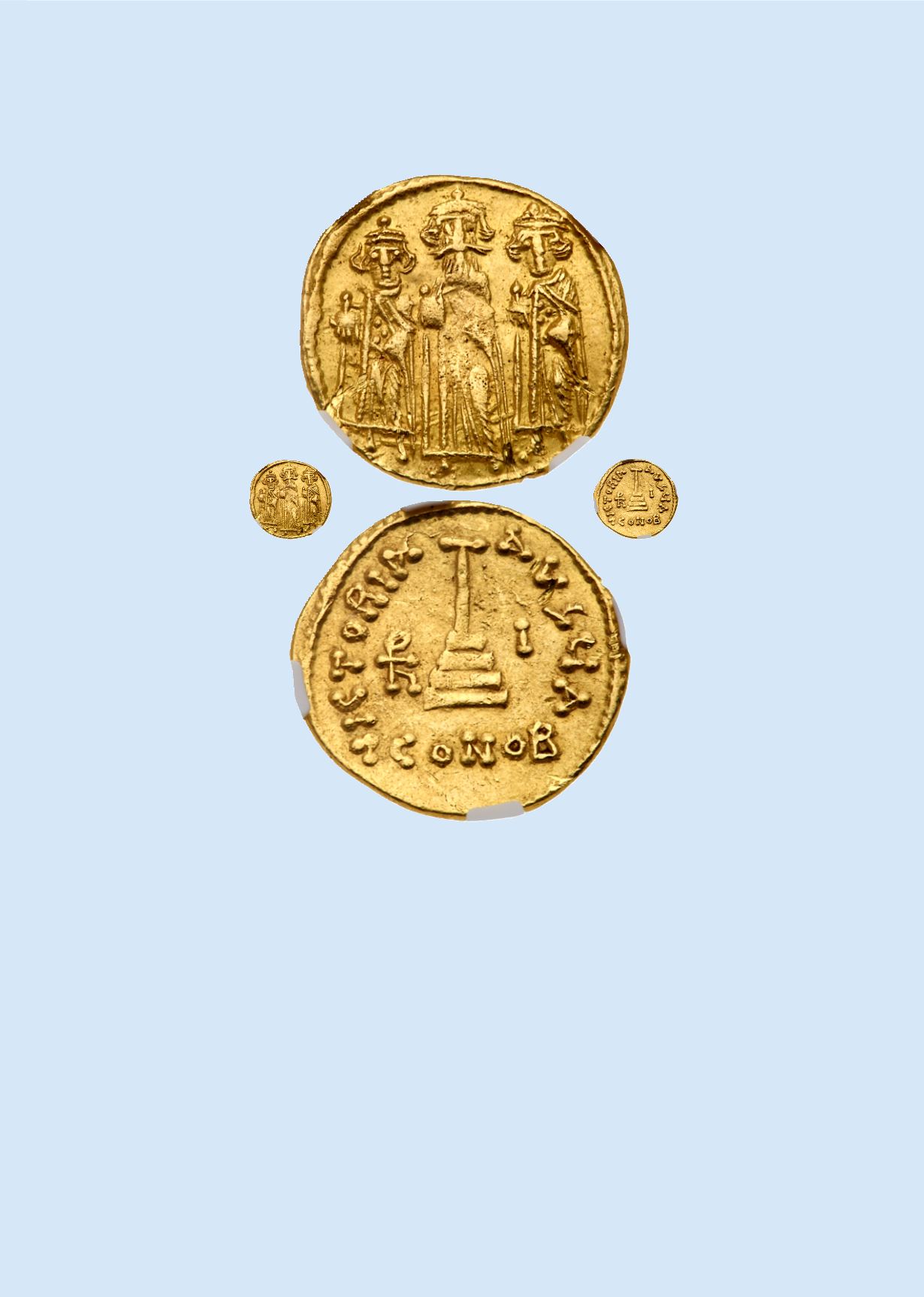

Extremely Rare Historic Arab-Byzantine Gold Aureus
314
Arab-Byzantine. Anonymous (temp. Mu’awiya b. Abi Sufyan or ‘Abd al-Malik b. Marwan). Gold Solidus
(4.34 g), AH 41-60 or 65-86. De-Christianized type imitating the Byzantine emperor Heraclius. Syrian or
perhaps an Egyptian mint. The emperor Heraclius, in the center, between his sons Heraclius Constantine,
on the left, and Heraclonas, on the right, each standing facing, wearing rudimentary crown missing the
central cross of the prototype; each figure holds a globe lacking a cross. Rev. VICTORIA AV
V
Q
, T-shaped
cross on four steps; in left field, Heraclian monogram; in right field, I; A//CONOB. Cf. Baldwin’s Islamic
Sale 24 (9 May 2013), 3999; cf. Spink Zurich 18 (February 1986), 86. Of the highest rarity. NGC grade
AU; Strike: 4/5, Surface: 2/5. Bent, scuffs, edge cut, and light graffito.
$75,000
Although it is not actually an official Byzantine imperial issue from the mint of Constantinople, the types and inscrip-
tions of this wonderfully preserved solidus closely mimic those used by the emperor Heraclius in the period 639-641,
when he ruled alongside his sons, Heraclius Constantine and Heraclonas. The three emperors are depicted as full fig-
ures on the obverse with Heraclius distinguished from his sons by his central position, larger scale, and by the splen-
did mustache and beard he sports. Heraclius Constantine and Heraclonas lack such remarkable facial hair and are in-
stead represented as beardless youths. On the reverse, the legend proclaims the “Victory of the Emperor” — the
standard reverse legend for Byzantine solidi since the early sixth century — and carries the mint mark of Constantinople.



















